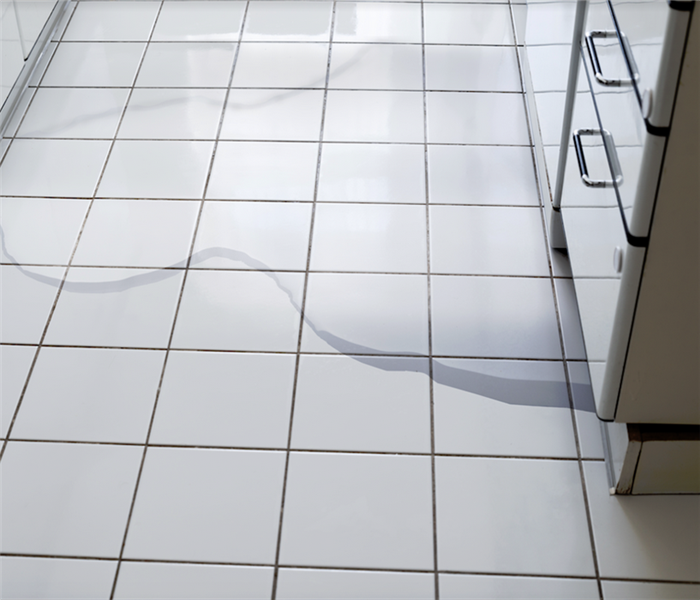What Water Restoration Equipment is Used When a Chicago Condo Experiences Water Damage?
10/18/2020 (Permalink)
 Appliance failures can quickly cause water damage in your condo. Contact our experienced team to mitigate the situation.
Appliance failures can quickly cause water damage in your condo. Contact our experienced team to mitigate the situation.
SERVPRO Has an Extensive Line of Equipment to Mitigate Household Flooding in Chicago
Chicago has more people than any other city in Illinois. It has the third-largest population in the United States. With all these people living and working in Chicago, there is a great need for housing. Much of this housing is supplied in the form of condominiums. If a pipe bursts or a dishwasher overflows on an upper level, it can lead to water damage not only in the original apartment but others as well. Getting a professional water restoration company on the job quickly is the smart thing to do.
What Inspection Devices are Used?
Before any restoration can take place, a scope gets done on the premises. This tells the technicians which areas of the structure are impacted by the water. It also helps them define to what extent structural elements and the content have absorbed the moisture. Our technicians use several inspection devices to find and track moisture and assist with water removal for a condo in Chicago. These include:
- Moisture Sensors – Equipped with short probes, these sensors are used in carpets and padding. It determines whether or not water has migrated to the subflooring. It only detects the presence of moisture; it does not measure moisture.
- Thermal Imaging Cameras – Used to inspect and monitor the moisture in building materials. They help at the start to evaluate the extent of moisture. Infrared cameras assist technicians in finding hidden water that has traveled behind structural elements.
- Moisture Meters – These are used to inspect the moisture content in different materials. They are often used for detecting the moisture level of wood. There are two types of moisture meters:
- Penetrating – This type penetrates the material on the principle of electrical conductivity. Multiple layers of material can be tested with the probes.
- Non-penetrating – Moisture is detected through the use of radio frequency emissions, conductivity, or capacitance. They cause no surface damage and are used to find high levels of water in material such as drywall.
- Thermal Hygrometers – This measures the relative humidity and temperature of air mass. There are standard levels of humidity that allow technicians to determine what moisture needs to be removed.
- Manometer – Moisture detection is not involved with a manometer. Instead, it measures gas or vapor pressure. It helps maintain proper air quality.
- Inspection Cameras & Borescopes – Used to look into cavities. It can help technicians determine the construction methods used and if contamination is present.
What Pumps Are Used to Extract Water?
SERVPRO has several types of pumps used for Chicago water removal. The pumps we use are primarily centrifugal pumps. The pumps can be truck-mounted or portable. There are three main types of pumps our technicians employ.
Self-priming trash pumps are used when there are solids in the liquid. They are classified as slurry, full trash, trash, or semi-trash pumps, depending on the amount and size of the debris. High-pressure pumps are utilized in areas such as basements and garages. They are quite powerful. Submersible pumps are electric and what we use most often. We use both smaller portable units and industrial units. They can operate quietly in the background.
Our technicians know how to assess just what pumps need to be used in the current site they are working on. Water extraction is crucial to the restoration of the premises. Standing water not only deteriorates building material but can cause secondary damage such as mold.
What Do You Use to Dry the Home?
After as much water is removed as is possible, the drying phase begins. When you hire SERVPRO, you are getting a team that knows how to use the equipment in the right ratio for optimum drying. Our drying equipment consists of:
- Centrifugal Air Movers – These units focus on replacing the damp, moist air with fresh airflow. They can be positioned to work in conjunction with our other drying equipment. Attachments such as a carpet clamp can “float” carpets allowing them to dry from underneath and from the top.
- Axial Air Movers – These types of air movers drive larger volumes of air and can cover more area than the centrifugal units.
- Structural Drying Equipment – We use various tools that allow technicians to direct warm, dry air into cavities not easily reached.
- Dehumidifiers – There are several types of dehumidifiers SERVPRO uses. There are refrigerant dehumidifiers, conventional dehumidifiers, and low grain refrigerants. Each has its own unique functions, with the refrigerant unit being the most common in terms of water restoration usage. Desiccant dehumidifiers use chemicals that absorb the moisture from the air.
Other equipment that can be utilized includes portable electric heaters and air conditioning units. With this arsenal of tools available for water damage restoration, it is no wonder SERVPRO is top in their field.
Contact SERVPRO of Evergreen Park / South Chicago City at (773) 337-3900 for quality water removal condo service. We’re Faster To Any Size Disaster.






 24/7 Emergency Service
24/7 Emergency Service